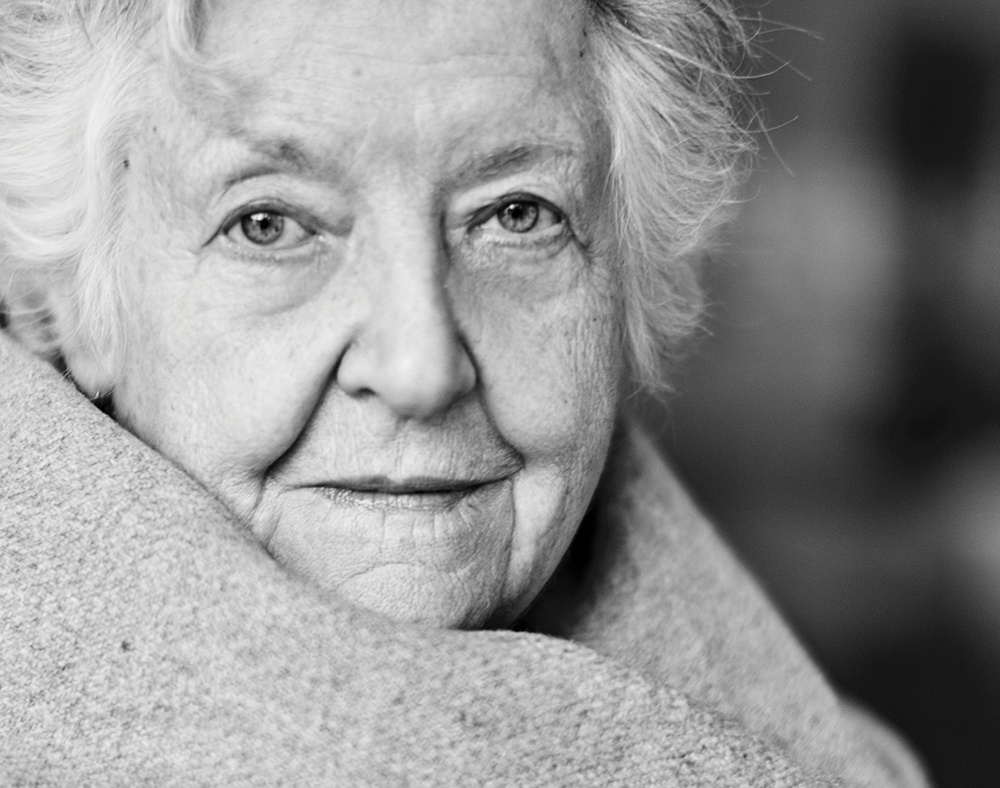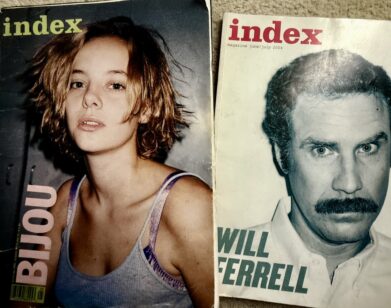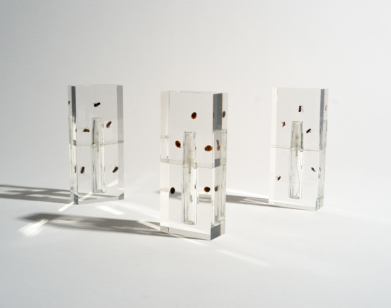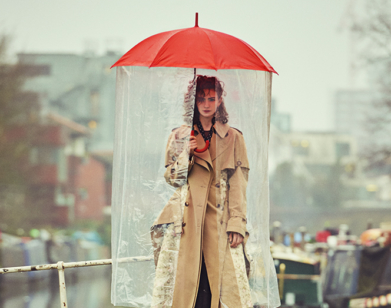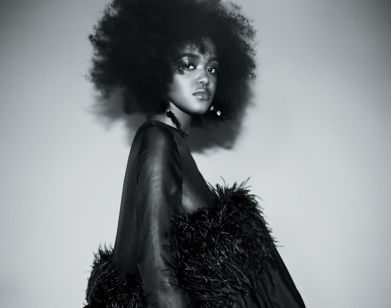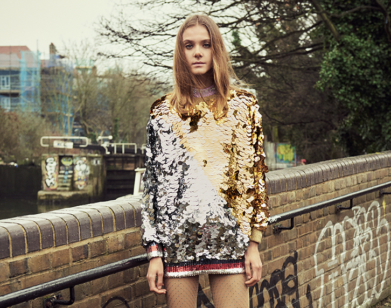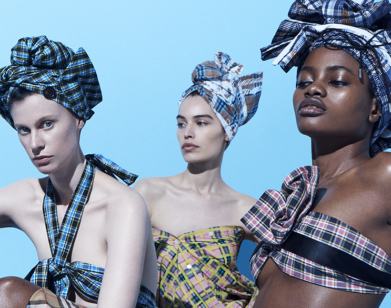Sheila Hicks: My work is associated with sensuality
It is hard to think of a contemporary artist who has done more to advance the medium of textiles than Sheila Hicks. Having worked in the somewhat remote art-world kingdom of fiber arts since the late-1950s, Hicks, now 83, has consistently and stunningly broken new ground in what can be done with material that, for so long, was perceived as craftwork closer to tapestries, fashion, or interior décor than avant-garde sculpture. Decade after decade, the Nebraska-born artist, who has lived in Paris since 1964, has tested the limits through weavings; anti-form, gravitational hangings of wool thread; balled organic bundles made from linen; painterly fabric-wrapped panels; and even handmade rugs stacked in configurations that leave open any final form.
Hicks’s work manages a breathtaking formalism that reaches toward abstraction, and yet her viewer is always aware of the blunt physical materiality of the product. Her fibers and textiles are haptic and tactile, and, for certain installations, the audience has even been invited to touch or enter the sculptural form. This spring, Hicks has been honored with a retrospective at the Centre Pompidou in her adopted hometown. Traces of her inspiration through a lifetime of travel and study—from minimalist Italian spatialism to Moroccan Berber weaving—can be found throughout the show. The New York–based artist Anicka Yi might not work in fabric, but she does make art outside of the expected disciplines. This past February, ten days after the exhibition opened at the Pompidou, the Hugo Boss Prize winner spoke to Hicks about alternatives to the usual art optics, and why some of our most relevant masterpieces don’t have to last forever.
SHEILA HICKS: Hi, Anicka. Do you speak Korean?
ANICKA YI: My Korean is pretty much nonexistent, unfortunately. I’m embarrassed to say that, having been born there.
HICKS: Have you been back recently?
YI: I went back for the first time in 2016 for the Gwangju Biennale. It was quite a culture shock.
HICKS: When I go there, I stay up until midnight to eat dinner in the street markets.
YI: I’m so impressed with what an incredible traveler you are. When did you go to Korea?
HICKS: I’ve been many times for exhibitions, and I taught there, too. I love it. It’s vital and alive and thriving day and night.
YI: You were born in Nebraska, but you’ve been a resident of Paris for more than 50 years.
HICKS: Yes, I’ve practically lived my whole adult life in Paris.
YI: Living in France, you must have an opinion on fragrance. Do you wear perfume?
HICKS: When people think of France, they immediately think of food, wine, perfume, and fashion. Those are the French specialties.
YI: I work with fragrance and make fragrance, and I’m always thinking about art through other senses—through smell or taste or touch.
HICKS: It’s like doing art with your eyes closed. I like to say that the kind of art I do can sometimes be done with my eyes closed, just by feeling with my fingers. I’ve actually participated in exhibitions for blind people, including at the Centre Pompidou not so many years ago.
YI: I’ve given a tour of an exhibition I had involving scent for a blind group. And when I encounter your work, I think there’s an olfactive component to it—I think about the smell of wool. I also immediately want to touch your works. That’s my reflex response to it.
HICKS: That’s the way I think, too. What turns you on right when you walk through a door? If it smells bad, you don’t go in. Or you may be curious to enter. And then your eyes are drawn to something, and if you’re attracted to it, you move toward it and want to touch it. You want to learn more about it. People want to immerse themselves. I imagine with your shows that involve smell, there must be different reactions depending on the country—in Japan or Korea, for example, versus America.
YI: In America, people are very uncomfortable with smell, especially if it’s an unsanctioned smell. They’re uncomfortable with foreign elements that they’re inhaling if it isn’t on the extremely pleasant end of the spectrum.
HICKS: And there can be problems with allergies or medical repercussions. I’ve had artist friends who have died from working with certain toxic materials.
YI: I want to ask you specifically about your materials, in terms of conservation. Do you think about how they will age?
HICKS: Yes, I have to be careful with fiber. People can breathe loose fibers and filaments, so it can’t be flying around in the air that people are inhaling. It’s really a big concern for the museum curators. Artists have a tendency to just throw anything into the ring and not think about these things.
YI: Have you taken steps to ensure that your work is preserved, say, 100 years from now?
HICKS: Yes, but in a way, when a museum acquires it, it becomes their problem. Honestly, I don’t expect my work to survive 100 years. Let it perish if it’s perishable. It’s like an emotion. Can you preserve an emotion for 100 years?
YI: I completely agree. I don’t think all artwork should last 100 years. I don’t think it needs to. It’s more about the vulnerability of that moment. We should advocate for that kind of art as well. Maybe the function of a museum isn’t to preserve art until the end of time, but instead to allow for these more ephemeral moments.
HICKS: Do you think younger artists are making more and more work in that vein?
YI: A lot of young people are attracted to these perishable or volatile materials. There’s much more of an interest in impermanence.
HICKS: It can be quite destructive, not looking for longevity or recognition in the classical sense, the way a lot of artists in the past have constructed their ideal careers.
YI: There is formalism at play in your work. Do you believe in a gendered formalism? It’s a term about how materiality and arrangement lean toward a gendered visual language. Has that ever crossed your mind working with yarn and wool?
HICKS: When you enter an exhibition and don’t look at the names of the artists, can you tell the gender of the maker? I can’t.
YI: Not necessarily. Let me ask you then, do you believe certain materials have a certain gendered aura?
HICKS: I think yours do.
YI: Because I work with scent, a sense that is associated with the feminine?
HICKS: It’s associated with sensuality—either feminine or masculine.
YI: I could say the same about your work. It feels very sensual.
HICKS: Probably both yours and mine do touch on that and in many respects depend on it.
YI: Do you ever feel like that has been a disadvantage for you?
HICKS: It’s never occurred to me. The early works that I did when I was in my twenties might have had a more political message. I have worked with a lot of different people over the years, and with a range of geographical locations and sociopolitical attitudes. And, of course, you should take into account who you are working with and what their connections and affiliations are.
YI: How much does that influence the narrative when you’re making a body of work?
HICKS: I’m saying, you always better find out who you’re working for! [laughs]
YI: Who is on your team now? Who do you have working in your studio?
HICKS: Actually, two Korean women are working for me here. One of them is doing her doctorate on the history of textiles that are made and worn for mourning.
YI: Wow. Have you ever seen a Korean funeral? It’s pretty intense.
HICKS: There’s a lot of cultural symbolism on the meaning of certain fibers, textiles, and threads that creep into your life—and at what point in your life. They tend to get talked about at birth and at death.
YI: I find it inspiring the way you’ve embraced so many different perspectives and techniques over every decade of your practice, and continued to make such groundbreaking work. What was it like when you were starting out in the 1950s and ’60s? Did people encourage the intermingling of disciplines, or was it very much, “Stay in your own lane”?
HICKS: From 1960 to 1964, I lived in Mexico with a lot of the indigenous population in the valleys in Guerrero, near Iguala. I lived in the countryside, and it was very enriching because people made everything that they wore, including their shoes. I saw them making their shoes out of old rubber tires that they had recuperated from cars and trucks. The soles were rubber, and if you turned them upside down, you’d see tire treads. Everything they were using, they made. I’m trying to remember what the typical smell would’ve been in the ranch there in Mexico. I think it might have been cooking on charcoal fires and making tortillas. That would’ve been the prevalent scent. There was also a lot of bougainvillea, a lot of poinsettia, a lot of jacaranda, wildflowers, and honey.
YI: That’s incredible.
HICKS: What part of New York City do you live in? What are the prevalent smells?
YI: I live in Long Island City, which I guess is the southern tip of Queens, and there are these semi-chemical aromas from all the development happening in the region. I think this little enclave is one of the most developed in America at the moment. There are high- rises going up left and right, so there are a lot of chemical machinery smells. And there’s low barometric pressure here, so the smells get really intense after a rainfall.
HICKS: You’re lucky you have so much wind and water. I try to conjure up memories of smells in New York. I can’t remember any good ones.
YI: It’s very pungent in the summer. If you walk through Lower Manhattan in summer, you have the intense smell of garbage. There are also a lot of intense food odors. Part of my interest in smells is how they are tied to economics, gender, and ethnicity. During the Industrial Revolution, poor communities had to live among all of the toxic ruin. Life had to do with surviving the smells of new industries.
HICKS: Do you have dogs or cats?
YI: I don’t. I grew up with animals, but I’ve become a very urban creature in the last couple of decades. I have a lot of plants. I think that influences the air that I breathe at home. I have a tremendous amount of plants, and a lot of plants can certainly scrub toxins in the air.
HICKS: I have a greenhouse in the middle of Paris. In May to October, it becomes the room I live in.
ANICKA YI IS A CONCEPTUAL ARTIST WHO EXPLORES TOPICS OF FRAGRANCE AND CUISINE IN HER WORKS.

